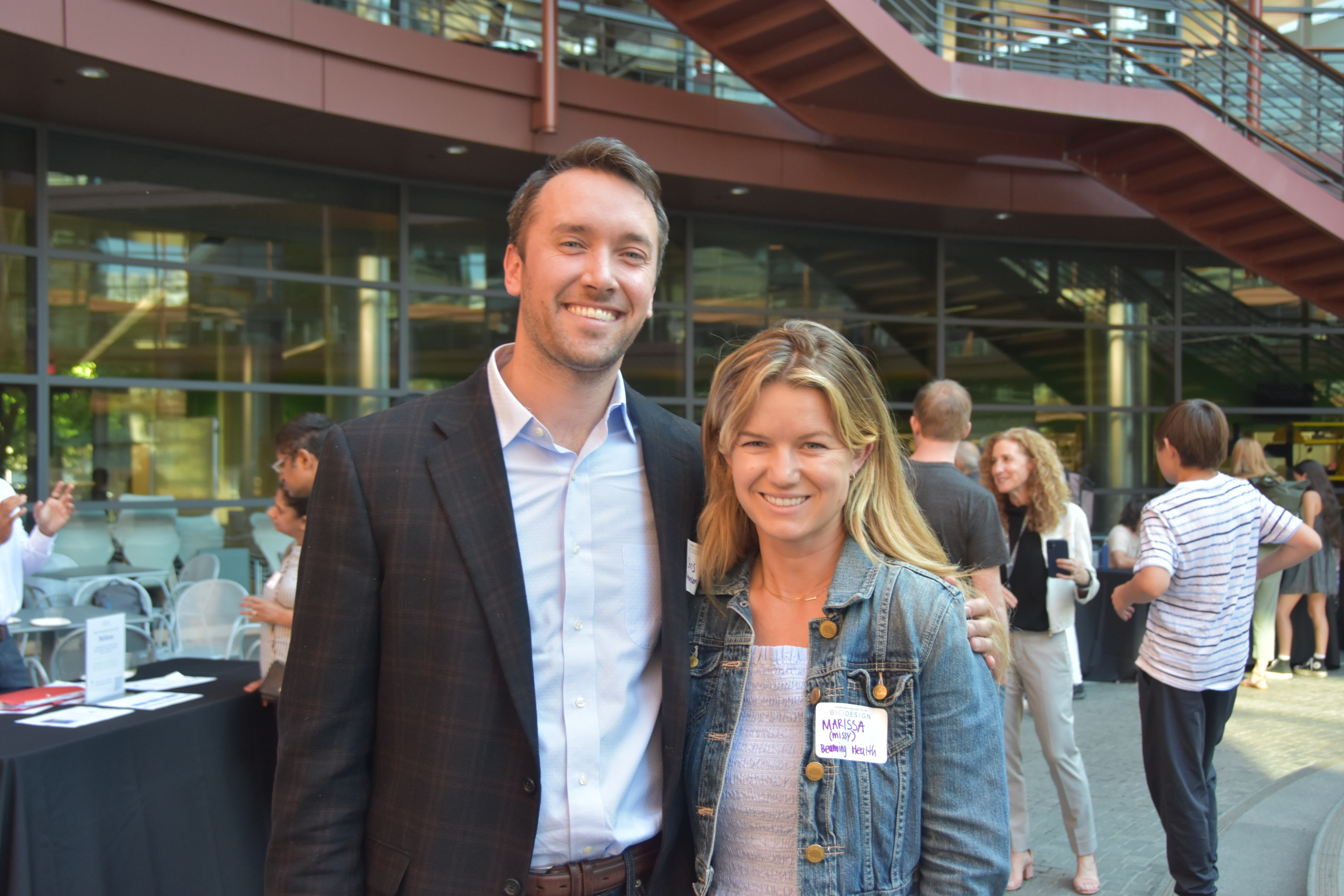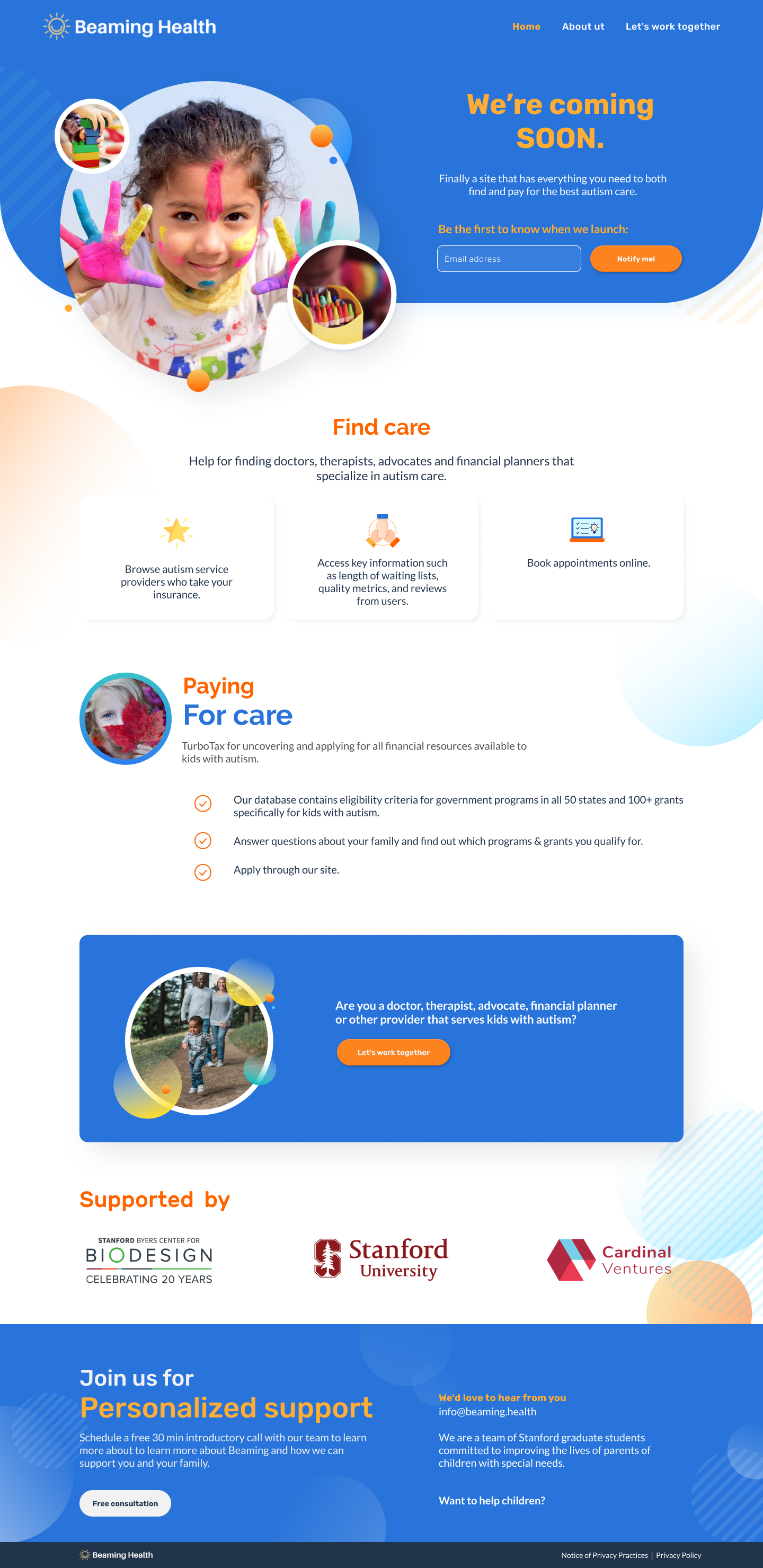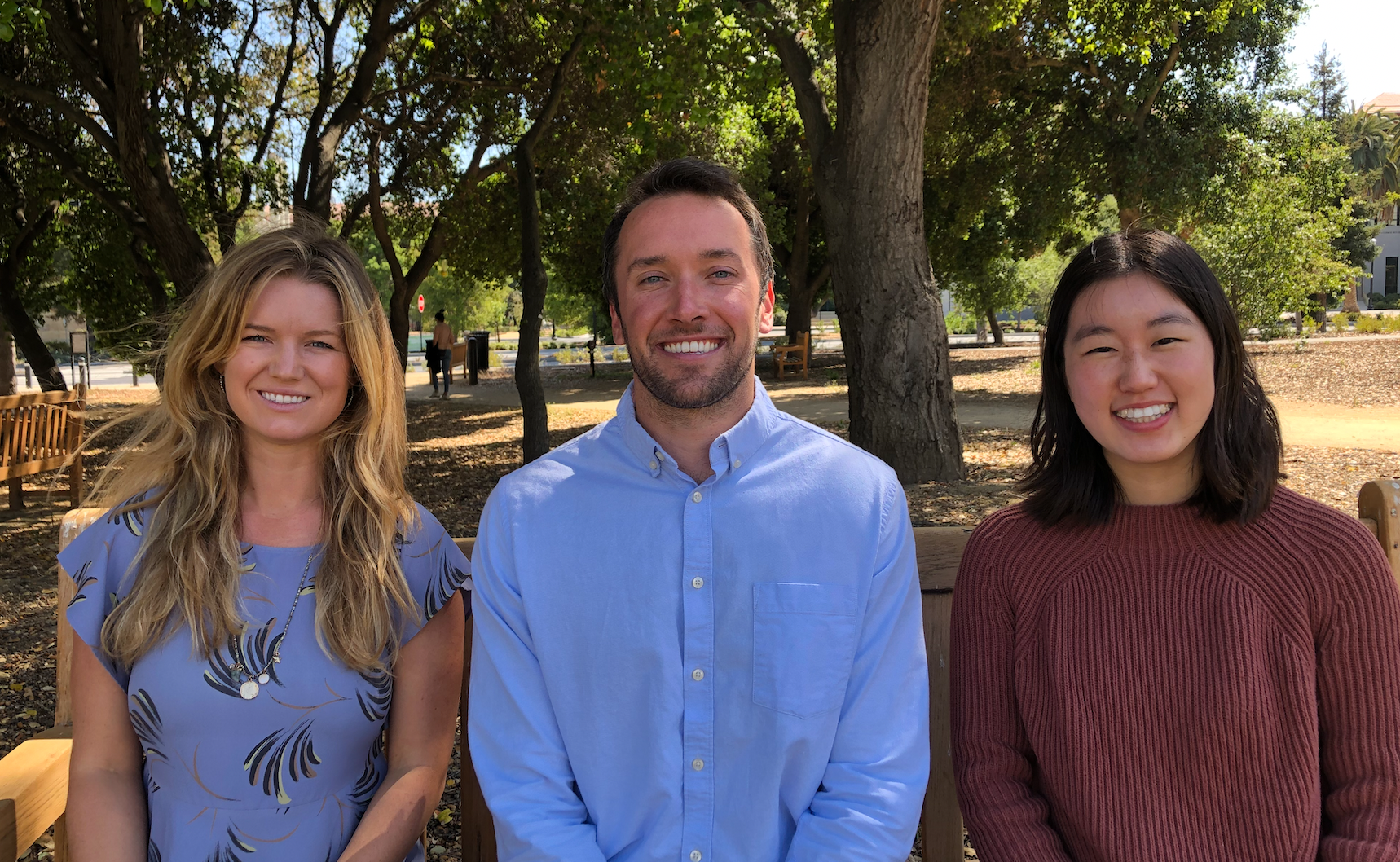Technologies
Beaming HealthHelping Those with Developmental Differences –
an Interview with Chris Olmanson of Beaming Health
What is the need you set out to address?
Chris: The need we’re addressing is helping children with developmental differences and their families access crucial services. It’s very common for parents to face numerous roadblocks when trying to get a child started, for example, in speech or occupational therapy. They end up on long waiting lists or their families have to pay lots of money out-of-pocket in order to get started with services. This means that lots of children in the 0-5 age group wait months for help at a time when the child their brains are developing so quickly that every month is precious.
What key insight was most important to guiding the design of your solution?
Chris: Our original hypothesis was that families don't know what their options are. There's no comprehensive resource to help them understand what providers are out there so they end up on waiting lists for a few they’ve discovered or been referred to, when they could get in faster if they had access to a larger number of qualified options.
"...they end up on waiting lists for a few [providers] they’ve discovered or been referred to, when they could get in faster if they had access to a larger number of qualified options."
As we progressed further in our research, we confirmed that this is a real problem. But we discovered that an even greater limiting factor to getting into services fast is a family’s ability to find a provider who will accept their insurance. There’s a huge lack of options, and those who can’t afford to pay out-of-pocket for services have a real disadvantage. So, our focus evolved from our original thinking to exploring how we can expand options for families to help them get access to a greater number of high-quality providers that also accept insurance. We did a lot of interviews with speech and occupational therapists – those who do take insurance and those who don’t – to understand their reasons and how we could help.

How does your solution work?
Chris: Our first-generation solution is an online directory that makes it easy for families to know what their options are. For example, if someone lives in San Francisco and they want to get their child into speech therapy, they can go to the site and find out all of the different providers that exist, which will take their insurance, who other parents think are good, and who has availability.
So far, we have 30,000 providers in the directory and more than 100,000 people using it every month to get connected with services in their area. It's a good start. But, as I said, knowing the options isn’t enough if people still end up on a three- to six-month waiting list or no one will take their insurance. No amount of provider visibility is going to help with that.
What we’re working on next is how to make insurance a more attractive option for providers in the network. By taking on a lot of the back end contracting, credentialing, and billing on behalf of the therapists, we’re eliminating a lot of the reasons they haven’t accepted insurance in the past. This allows them to stay focused on delivering care while simultaneously expanding options for families.
This approach requires us to negotiate higher payment rates with the insurance companies so that the therapists get paid at a competitive rate. The draw for the insurance companies is that we help them expand their network of providers. If they don't have any providers in their network with availability to take on new patients, they're a less attractive option for the employers they represent.
Working with insurance companies can be a challenge. But my background is insurance [United Healthcare], so this feels like a sweet spot for us and something we can do well.
 The Beaming Health platform is intended to help children with developmental differences and their families access crucial services.
The Beaming Health platform is intended to help children with developmental differences and their families access crucial services.
At what stage of development is the solution?
Chris: The directory launched in 2022, and the second phase of our solution is in development.
Tell us about a major obstacle you encountered and how you overcame it.
Chris: The biggest challenge we’ve faced at Beaming Health is around monetization. We’re tackling a big and important problem, but the question has always been who pays for the solution. In retrospect, figuring out the company’s business model – someone who can pay for it so that it can be a business that’s sustainable for a long time – should have been a higher priority early on. Instead, our thinking in this space has evolved over time.
We’re trying to solve a pain point that affects parents, but they’re already paying for so much; and we don't want to add another expense.
We looked at whether we could target self-insured employers to help them better serve their employees. But we found out that this is a route a lot of companies are trying. And especially in the current market environment, where employers are laying off people, they’re not looking to add features to their benefits packages to aid retention. It's a noisy environment and difficult to get the attention of the HR professionals who are being pitched on all these new programs.
We also investigated how we could monetize through providers. But what we learned is that providers are squeezed pretty thin, and they don't have a lot of extra money to spend on new solutions.
So, then we looked at how we could help insurance companies. And that's where we've landed. They're the ones that have the money to be able to pay for creative solutions and, frankly, they should be the ones paying for things that keep their members healthy. It's a good landing spot, but it has been a bit of a journey to get there.
What role did your Biodesign training play in enabling you to design, develop, and/or implement this solution?
Chris: The biggest thing Stanford Biodesign did for us was bring us together and help us kick-start the whole project [when Chris and his co-founder, Marisa Pittard, took the Biodesign for Digital Health course].
The second biggest thing is giving us a framework to keep us focused on staying close to the customer. That’s a top priority for us. We have an advisory board of parents that we meet with on a weekly basis. And we recently started a provider advisory board, made up of therapists, that we meet with on a weekly basis, too. Our goal is to build with people’s actual needs in mind rather than pursuing ideas we dream up in a room together without any input from the people we’re trying to serve. We don’t lead with solutions. We do a lot of work to figure out the real problems and then build solutions that actually address them.
"We don’t lead with solutions. We do a lot of work to figure out the real problems and then build solutions that actually address them."
What advice do you have for other innovators about health technology innovation?
Chris: If you’re working on a big, important problem, there’s always a way to make it work. Stay close to the customer, listen to their needs, and drill down to their root causes. You may need to pivot. And things may take you longer than you think. But just persevere.
Chris Olmanson and Marissa Pittard co-founded Beaming Health in 2021 out of the Biodesign for Digital Health course. To learn more, visit the Beaming Health website.
Disclaimer of Endorsement: All references to specific products, companies, or services, including links to external sites, are for educational purposes only and do not constitute or imply an endorsement by the Byers Center for Biodesign or Stanford University.








